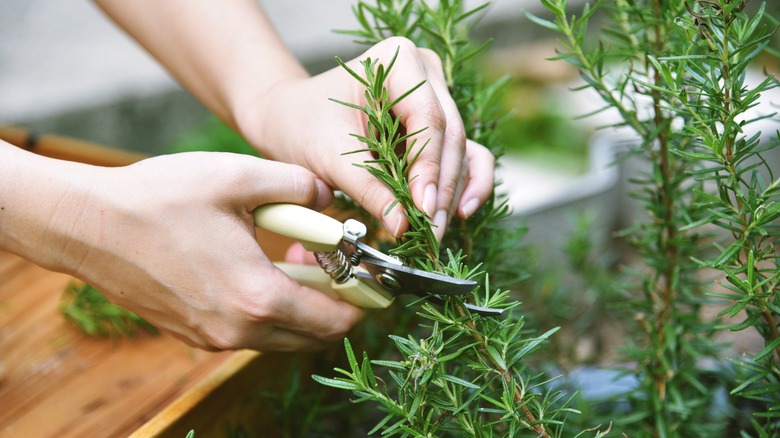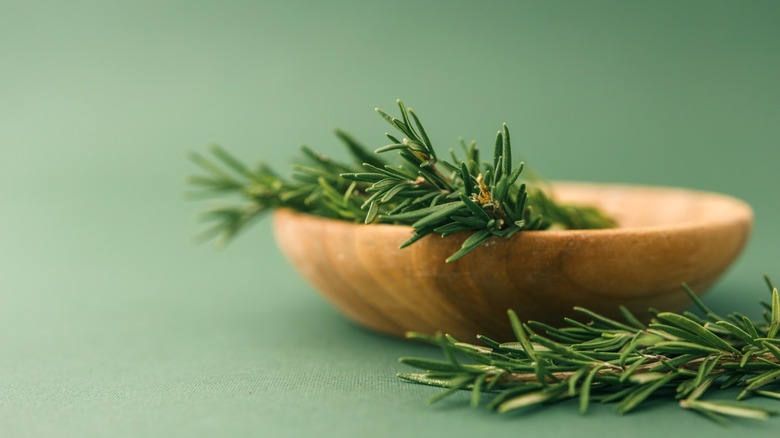The Right Way To Harvest Rosemary In Your Garden
We may receive a commission on purchases made from links.
While you can easily substitute dried for fresh herbs, we believe that there's nothing like the stuff cut directly from your garden. We're specifically fans of homegrown rosemary, which adds a pungent, woodsy brightness to pasta dishes, homemade focaccia, and the marinade for your grilled chicken breasts. Rosemary is a pretty forgiving addition to your home garden, as it's hardy and tough to kill. With that said, a bit of know-how is required to harvest it without hurting your plant.
If you live in a temperate climate or have your rosemary indoors, you can harvest from it year-round. If your plant is outdoors in cold weather, it's best not to trim it unless you bring it inside. Pick thick, long stems for cutting, preferably those at least 6 to 8 inches long. Resist the urge to snap the stems with bare hands, and, instead, use pruning shears or clippers for clean cuts. You ideally want to cut just above a growth node; that's the area on the stem where the bushy part has just started to flare out. Don't cut more than 20% of the plant unless it is very well established.
You can use harvesting rosemary as an excuse to prune and shape the plant. Leaving longer stems will encourage upward growth, while selectively pruning the plant to be shorter will cause a fuller, bushier profile. There's no right or wrong answer when it comes to this choice; it just depends on your space and aesthetic preference. Rosemary oils can irritate human skin, so consider wearing gloves as you work.
How to store and use your fresh garden rosemary
If your plant is big and healthy enough, you can use it to cut trimmings as you need them for dinner that same evening. If you want to harvest a bit of rosemary and hold onto it for a few days, you have some options. We like the paper towel trick for storing herbs, in which your rosemary is wrapped in a damp paper towel and put in a plastic bag to keep it hydrated and fresh. The so-called "bouquet hack" also keeps herbs fresh by submerging cut ends in water, like a flower arrangement. And, naturally, you can dry your rosemary as well and keep it year-round.
If you have a real bumper crop of rosemary, you may end up with more than you think you can manage! Thankfully, rosemary goes great with many treats you whip up in your kitchen, from cocktails to roasted potatoes to a flatbread with blue cheese and berry-flavored raw honey. While rosemary tastes delicious in a bunch of popular foods, its uses aren't limited to eating, either. When steeped in water, rosemary makes a fragrant leave-in hair rinse that some believe promotes growth and discourages dandruff (though, again, some people react to rosemary oil, so it's smart to double-check your skin can handle the stuff). It's an effective form of pest control as well, since many insects hate the same strong oils that can irritate your skin. And, because it smells great, it's an excellent potpourri or foundation for an ornamental wreath.

